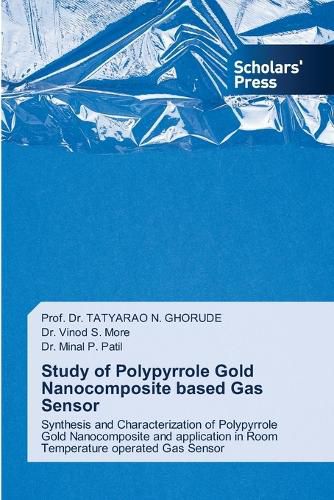Readings Newsletter
Become a Readings Member to make your shopping experience even easier.
Sign in or sign up for free!
You’re not far away from qualifying for FREE standard shipping within Australia
You’ve qualified for FREE standard shipping within Australia
The cart is loading…






This book focuses on the development of room-temperature operated gas sensors made of PPy composites for the detection of hazardous gases like ammonia, with potential applications in biomedicine and industry. A significant advancement in gas sensor technology is In-situ chemical oxidative polymerization of pyrrole using novel dopant and oxidant. The investigation also covers the fabrication of metal oxide and noble element nanoparticles, screen-printing thin films on interdigitated electrodes, and in-situ chemical polymerization as a means of forming nanocomposite formation. At room temperature, a number of characteristics of the sensors and photocatalysts are examined, including sensitivity, selectivity, and stability over time. Several techniques are employed in the characterization of the powdered nanocomposite, such as FTIR spectroscopy for the chemical composition of smaller particles, UV-Visible spectroscopy for band gap analysis, XRD for crystal structure determination, and SEM as well as TEM for structural and morphological analysis. A brief overview and several in-depth chapters on the use of poisonous gas sensors are provided in this book.
$9.00 standard shipping within Australia
FREE standard shipping within Australia for orders over $100.00
Express & International shipping calculated at checkout
Stock availability can be subject to change without notice. We recommend calling the shop or contacting our online team to check availability of low stock items. Please see our Shopping Online page for more details.
This book focuses on the development of room-temperature operated gas sensors made of PPy composites for the detection of hazardous gases like ammonia, with potential applications in biomedicine and industry. A significant advancement in gas sensor technology is In-situ chemical oxidative polymerization of pyrrole using novel dopant and oxidant. The investigation also covers the fabrication of metal oxide and noble element nanoparticles, screen-printing thin films on interdigitated electrodes, and in-situ chemical polymerization as a means of forming nanocomposite formation. At room temperature, a number of characteristics of the sensors and photocatalysts are examined, including sensitivity, selectivity, and stability over time. Several techniques are employed in the characterization of the powdered nanocomposite, such as FTIR spectroscopy for the chemical composition of smaller particles, UV-Visible spectroscopy for band gap analysis, XRD for crystal structure determination, and SEM as well as TEM for structural and morphological analysis. A brief overview and several in-depth chapters on the use of poisonous gas sensors are provided in this book.